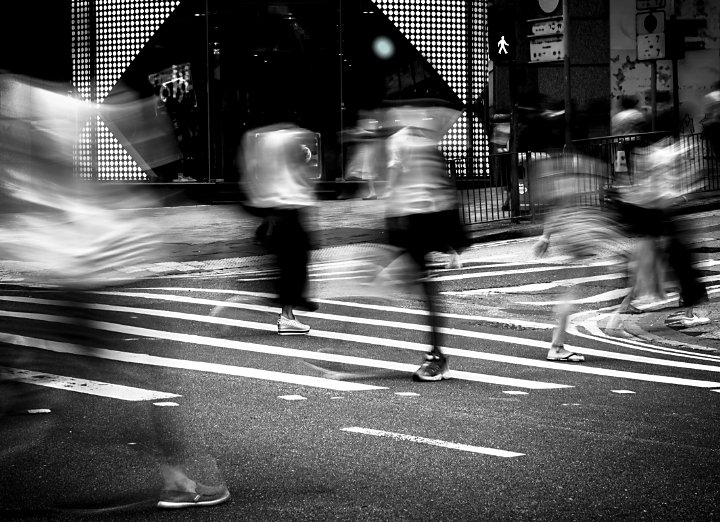An Unbiased View of Framing Streets
An Unbiased View of Framing Streets
Blog Article
Some Known Factual Statements About Framing Streets
Table of ContentsHow Framing Streets can Save You Time, Stress, and Money.Getting My Framing Streets To WorkEverything about Framing StreetsThe Main Principles Of Framing Streets The smart Trick of Framing Streets That Nobody is DiscussingFraming Streets - The Facts
, generally with the goal of recording images at a decisive or emotional minute by cautious framework and timing. https://parkbench.com/directory/framingstreets1.
Rumored Buzz on Framing Streets
Susan Sontag, 1977 Street photography can concentrate on people and their behavior in public. In this respect, the road digital photographer is similar to social documentary photographers or photojournalists that also operate in public locations, yet with the objective of recording relevant occasions. Any of these digital photographers' pictures might record people and property noticeable within or from public places, which commonly requires navigating moral issues and legislations of personal privacy, protection, and residential property.
Depictions of day-to-day public life create a genre in practically every duration of world art, beginning in the pre-historic, Sumerian, Egyptian and early Buddhist art durations. Art handling the life of the street, whether within views of cityscapes, or as the dominant concept, shows up in the West in the canon of the Northern Renaissance, Baroque, Rococo, of Romanticism, Realism, Impressionism and Post-Impressionism.
Framing Streets Fundamentals Explained
Louis Daguerre: "Boulevard du Temple" (1838 or 1839) In 1838 or 1839 the very first photo of numbers in the road was videotaped by Louis-Jacques-Mand Daguerre in among a set of daguerreotype sights taken from his workshop window of the Blvd du Holy place in Paris. The 2nd, made at the elevation of the day, reveals an uninhabited stretch of street, while the various other was taken at concerning 8:00 am, and as Beaumont Newhall reports, "The Blvd, so continuously loaded with a relocating crowd of pedestrians and carriages was completely solitary, except an individual who was having his boots combed.
As a result his boots and legs were well defined, but he is without body or head, since these remained in activity." Charles Ngre, waterseller Charles Ngre. https://framingstreets1.godaddysites.com/f/framing-streets-mastering-the-art-of-street-photography was the very first professional photographer to obtain the technological class called for to sign up individuals in activity on the street in Paris in 1851. Professional Photographer John Thomson, a Scotsman working with reporter and social activist Adolphe Smith, released Street Life in London in twelve month-to-month installations starting in February 1877
The 7-Minute Rule for Framing Streets
Eugene Atget is related to as a progenitor, not since he was the first of his kind, yet as an outcome of the popularisation in the late 1920s of his document of Parisian streets by Berenice Abbott, who was motivated to carry out a comparable paperwork of New York City. [] As the city developed, Atget helped to advertise Parisian roads as a worthwhile topic for digital photography.

The smart Trick of Framing Streets That Nobody is Discussing
The chief Mass-Observationists were anthropologist Tom Harrisson in Bolton and poet Charles Madge in London, and their first report was created as guide "May the Twelfth: read what he said Mass-Observation Day-Surveys 1937 by over two hundred viewers" [] Window cleaner at Kottbusser Tor, Berlin, by Elsa Thiemann c. 1946 The post-war French Humanist College digital photographers discovered their subjects on the street or in the bistro. Andre Kertesz.'s widely admired Images la Sauvette (1952) (the English-language edition was entitled The Definitive Minute) advertised the idea of taking an image at what he termed the "definitive minute"; "when type and content, vision and composition combined into a transcendent whole" - vivian maier.
The Only Guide to Framing Streets
, then an instructor of young children, associated with Evans in 193839.'s 1958 book,, was substantial; raw and commonly out of emphasis, Frank's pictures examined mainstream photography of the time, "challenged all the official regulations laid down by Henri Cartier-Bresson and Pedestrian Evans" and "flew in the face of the wholesome pictorialism and sincere photojournalism of American publications like LIFE and Time".
Report this page